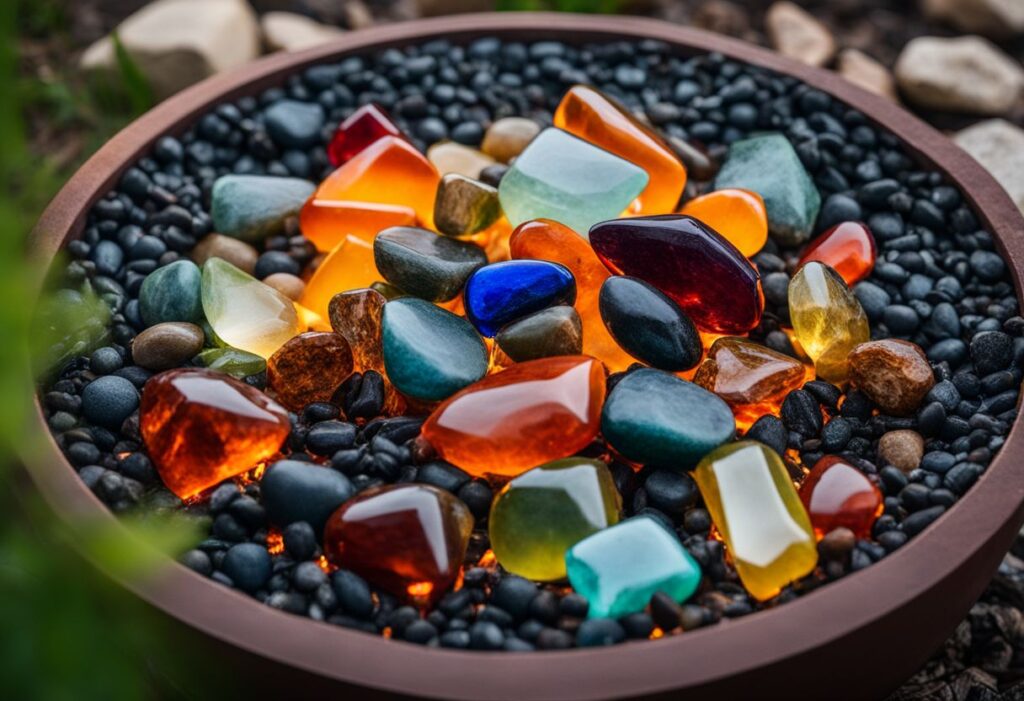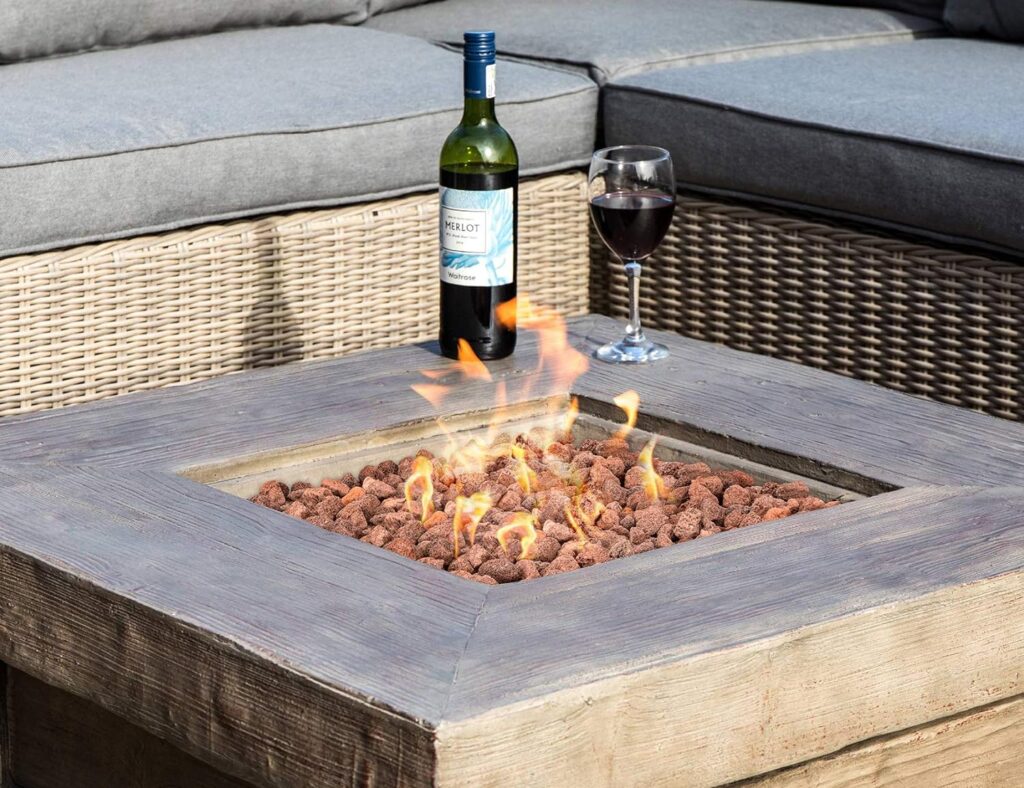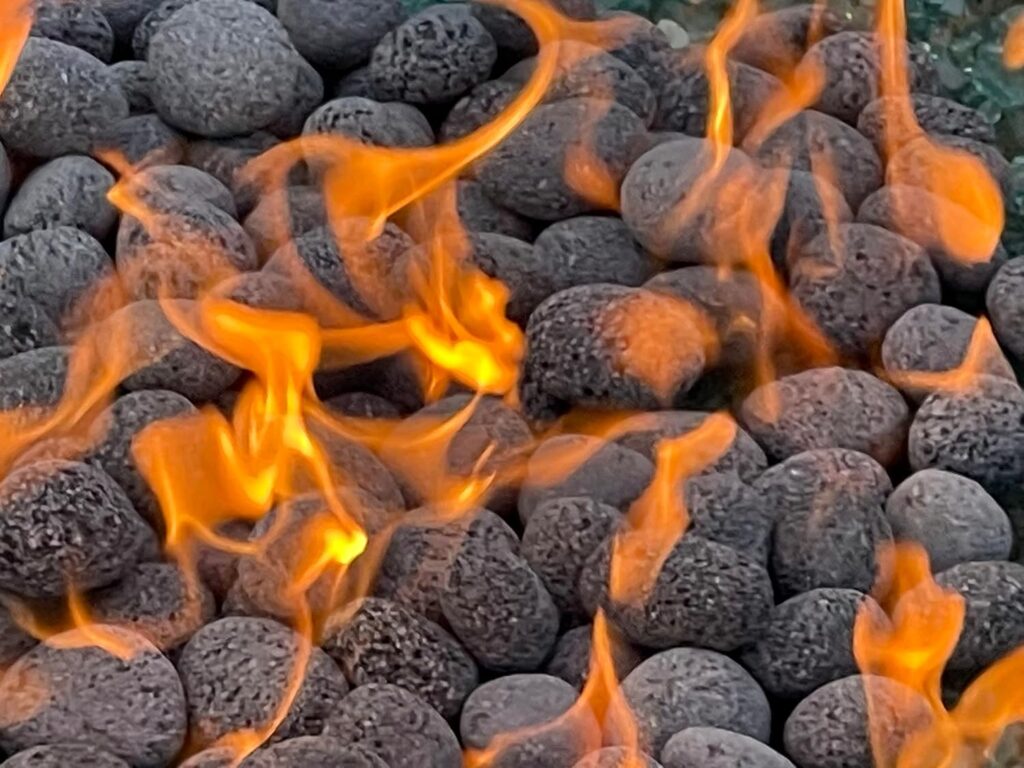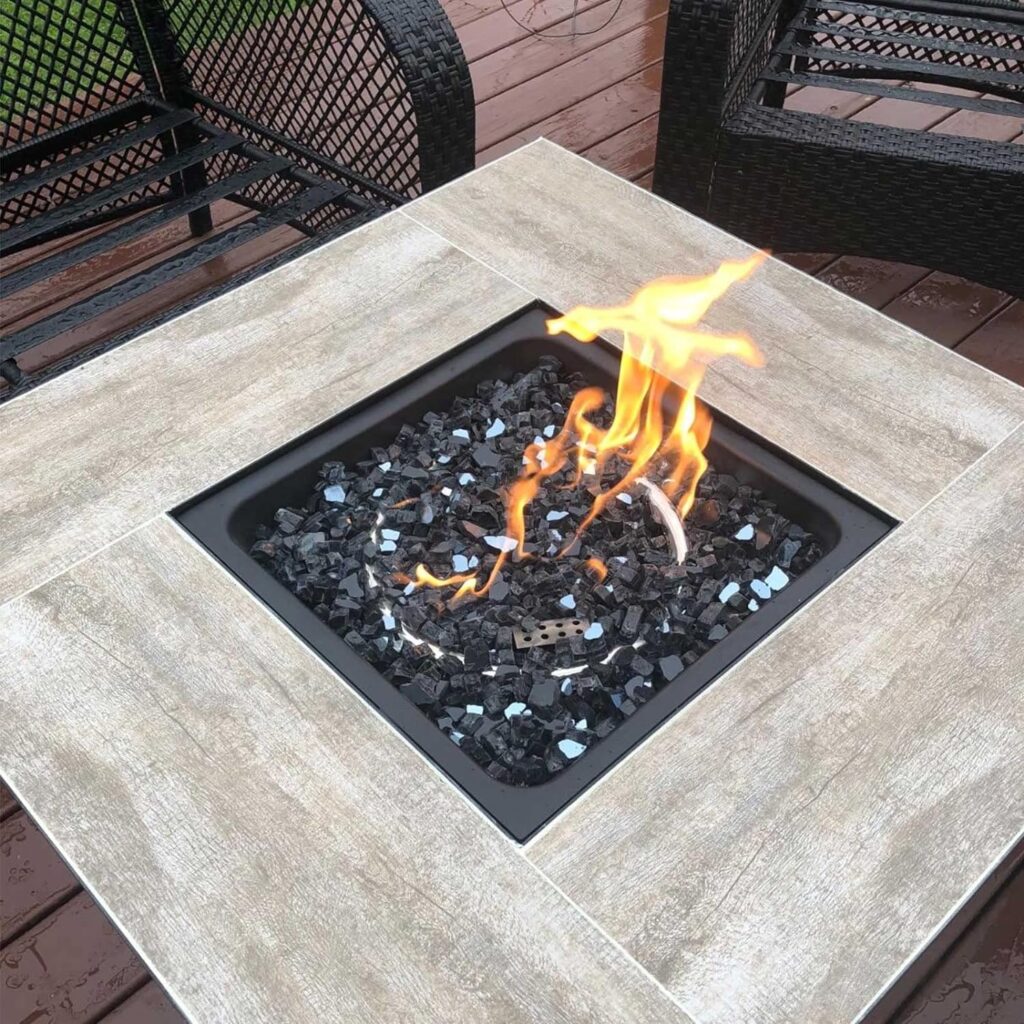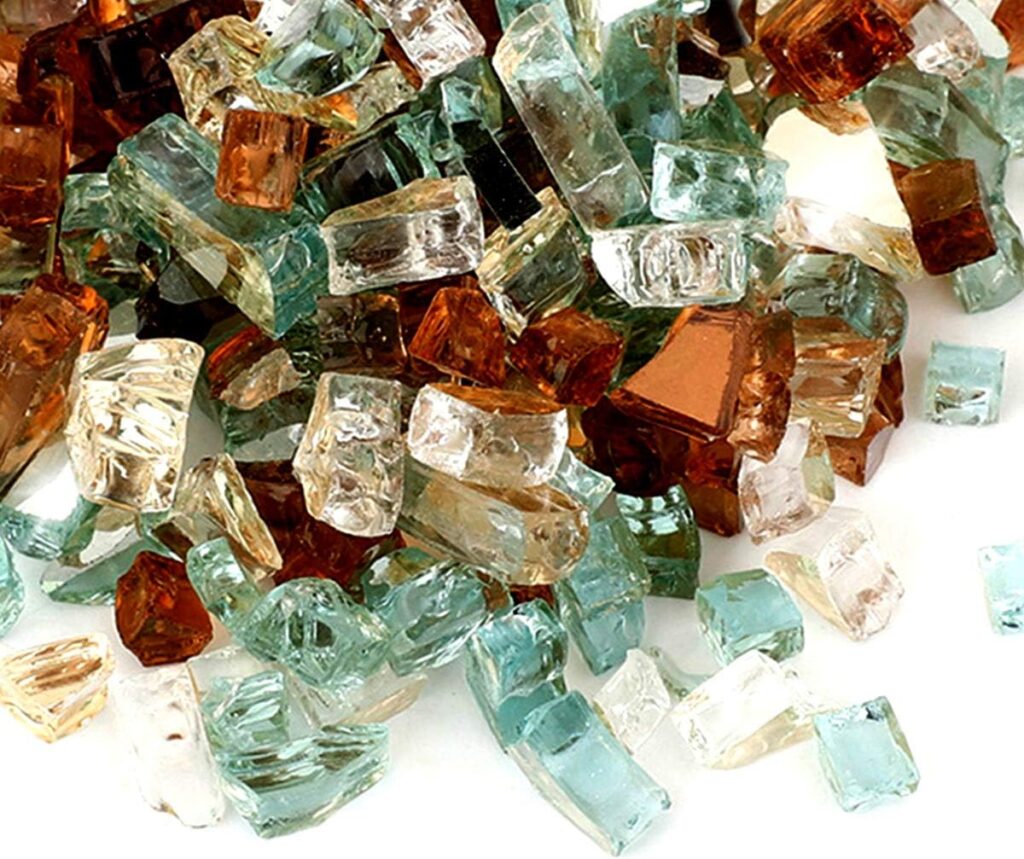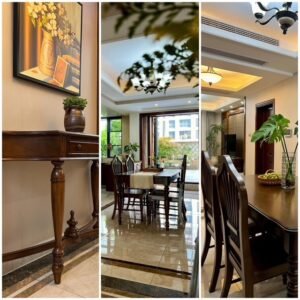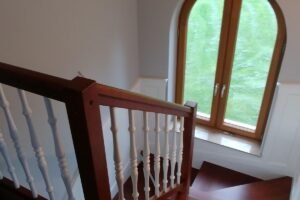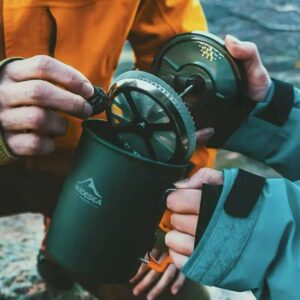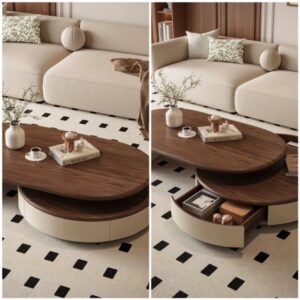Table of Contents
More and more people are adopting gas fire pits for their patio time. This type of fire pit provides clean burning, good heat retention, and aesthetic value. But you know, the most crucial element to attaining the best fireside experience is using the right fire pit rocks, which are more than just an aesthetic choice—they ensure safety and longevity for your fire pit.
Our guide will navigate you through different rock types, from the radiant warmth of lava rocks to the chic sparkle of glass beads, equipping you with all you need to create that perfect ambiance.
The Benefits of Using Fire Pit Rocks
Fire pit rocks are also called “fire pit media.” They replace the traditional wood log while still maintaining the flame appearance. Many people think fire pit rocks are only for aesthetics, but they serve many other purposes.
Firstly, It helps distribute the flame evenly and create a more natural appearance.
Secondly, it can hide the burner, pan, and gas valve to create a neat look.
Types of Fire Pit Rocks and Their Features
The typical fire pit rocks are lava rock and fire glass. Each type offers unique benefits in aesthetics, functionality, and maintenance requirements, allowing you to choose the perfect option for your style and needs. Hereafter, we will discuss different fire pit rocks and their features.
Lava Rocks
Lava rock is natural and organic, formed naturally from volcanic magma. Its distinctive porous appearance results from the cooling of molten magma, punctuated by the release of trapped gases. Lava rock’s volcanic composition guarantees that it is fire-safe and capable of withstanding extreme temperatures. Moreover, it is durable and requires no maintenance.
Beyond its practical attributes, lava rock is a naturally captivating filler for fire pits, lending a rustic charm to any outdoor space. Additionally, it is an economical alternative to pricier fire pit media, offering flexibility in design and budget.
Types of Lava Rocks
Lava Rocks are available in red and black, and you can have either color rolled or tumbled for a more polished appearance. Over time, black lava rock may appear grey with use. These unique stones come in various sizes—from small pebbles to larger chunks—and can fit different styles of fire pits.
How to Place Lava Rocks in the Fire Pit
Arranging lava rocks in your gas fire pit requires a gentle touch to ensure optimal performance. Whether you have a fire bowl or a fire table, it is crucial to hand the rocks carefully. Due to their sourcing process, lava rocks may contain dust and small particles. Simply dumping them into your fire pit can lead to blockages in the jet, hindering the flames’ ability to emerge effectively.
To arrange the lava rocks effectively and prevent such issues, follow these steps:
- Inspect the Rocks: Before placing them in your fire pit, inspect the lava rocks for excessive dust or debris. You can gently shake or brush them to remove loose particles.
- Layering Technique: Instead of dumping all the rocks at once, layer them gradually. Start with a base layer, ensuring the rocks are spread evenly across the bottom of the fire pit. This initial layer acts as a foundation for the subsequent layers.
- Avoid Clumping: Do not clump the rocks together as you add more layers. Spread them out evenly to allow for proper airflow and prevent blockages in the gas jet.
- Mindful Placement: Pay attention to how you place the rocks, ensuring they don’t obstruct the gas outlets or burner elements. Keep the rocks away from these crucial components to maintain optimal functionality.
- Final Adjustments: Once you’ve arranged all the rocks, take a moment to make any necessary adjustments. Ensure no gaps exist where the burner elements are exposed and all rocks are positioned securely.
Cautions While Using Lava Rocks
When using lava rocks in your fire pit, it’s essential to exercise caution to prevent potential hazards.
Ensure that your lava rocks are thoroughly dry before igniting the fire. If they’re damp, it’s advisable to start the fire pit at a lower temperature for 15-30 minutes to allow excess water to steam off safely.
Once the rocks appear dry, gradually increase the heat. Avoid turning on the fire pit at high temperatures when the lava rocks still contain moisture, as this can cause them to burst and potentially jump out of the fire pit, posing a danger to those nearby.
Fire Glass
Fire glass is tempered glass commonly used as gas fire pit media. It can withstand intense heat and never discolor, melt, or burn when exposed to a gas fire. Additionally, fire glass does not produce soot, ash, or smoke. It generates 3-4 times more heat than lava rock. Moreover, fire glass offers a wide range of color options, adding significant aesthetic value to any fire pit.
However, it’s worth noting that fire glass is typically more expensive than lava rocks. For those on a tighter budget, using lava rocks as a base and adding a layer of fire glass on top can be a cost-effective alternative.
Types of Fire Glass
Fire Glass comes in various forms, including reflective, accent, and smooth. Although they share the same fundamental nature, each form offers a distinct visual appearance.
Cautions While Using Fire Glass
Adhering to a specific arrangement is important when incorporating fire glass and lava rocks in your fire pit. Fire glass should always be the top layer of the burner’s media. Avoid placing lava rock or other media on top of the fire glass. Doing so can damage both the fire glass and the burner. Furthermore, this arrangement may not appear to be aesthetically pleasing.
The small size of the Fire Glass may pose dangers due to its sharp edge. Handling it with protective gloves may prevent injury.
Considerations When Choosing Fire Pit Rocks
When choosing fire pit rocks, consider their heat resistance, aesthetics, and maintenance requirements. The right rocks can enhance the visual appeal of your outdoor space while also withstanding the intense heat from the fire pit.
It’s essential to select rocks that require minimal maintenance and upkeep for a hassle-free experience.
Heat Resistance
Selecting fire pit rocks that are heat resistant is crucial for ensuring safety and durability. Decorative options such as lava rocks and tumbled lava stones provide excellent heat resistance, reducing the risk of explosion at high temperatures. Fire glass, although it generates more heat than lava rocks, is ideal for colder environments. Additionally, since it is made of tempered glass, it is resistant to melting or cracking.
Aesthetics
Fire pit rocks play a crucial role in enhancing the aesthetics of outdoor spaces, with lava rocks and fire glass offering distinct visual appeals.
Lava rocks are favored for creating a rustic charm and farmhouse-style ambiance in outdoor settings. These natural stones, in earthy tones like red, black, and brown, add a warm and inviting feel to the fire pit area.
On the other hand, fire glass provides a modern and contemporary look with its vibrant colors and reflective properties. This tempered glass material comes in various hues such as blue, green, amber, or clear, making it easy to match any design scheme or personal preference.
Whether you prefer a cozy rustic atmosphere or a sleek modern vibe, choosing between lava rocks and fire glass can help you achieve the desired aesthetic for your outdoor fire pit space.
Maintenance
Proper maintenance is essential for ensuring the longevity and performance of fire pit rocks, such as lava rocks and fire glass.
Lava rocks, being natural stones, can last a long time if cared for correctly. However, over time, they may produce ash buildup from prolonged use and exposure to high temperatures. Replacing lava rocks every three years is recommended to maintain their effectiveness and appearance. Additionally, it’s crucial to keep lava rocks away from moisture to prevent cracking or deterioration.
On the other hand, fire glass beads are highly durable and can last indefinitely under normal conditions with minimal maintenance required. Regularly cleaning off dust or debris and keeping them dry can help preserve the beauty and functionality of fire glass in your outdoor fire pit setup. Following these care tips, lava rocks and fire glass can continue enhancing your outdoor space for years.
FAQs
Ideal rocks for a fire pit should be heat-resistant, like lava rocks or fire glass.
Yes, regular cleaning and maintenance help keep your fire pit rocks in good condition and ensure safe, efficient fires.
Not all rocks are suitable for fire pits. Avoid river stones or other porous rocks that can trap moisture and potentially explode when heated.
Arrange the rocks evenly to cover the burner or spread them out across the bottom of the fire pit for even heat distribution. Don’t place the lava rocks on top of the fire glass if you use a combination of fire pit rocks.
Indeed, some rock types may release toxic fumes if used incorrectly with gas-fueled fires; always follow the manufacturer’s recommendations on compatible materials.
Realicozy.com may get compensated if you purchase from our independent affiliate links in the article.

